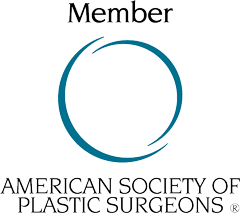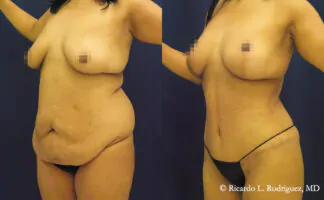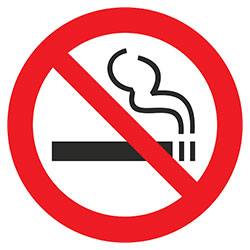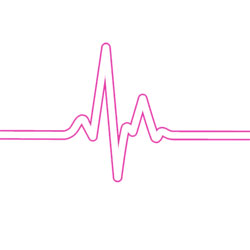What is a Breast lift?
Dr. Ricardo Rodriguez is a board-certified plastic surgeon serving patients in Baltimore and the surrounding DMV area. With over 1,000 breast procedures performed, he brings extensive experience and artistry to breast lift surgery, helping women restore a natural, more youthful contour.
A Breast lift tightens and removes excess skin, raising the nipple and breast tissue to create a firmer, more lifted look. Most women have the procedure on both breasts, but it can be done on just one side to correct asymmetry.
The more sagging you have, the more extensive your surgery will be. The surgeon’s technique and skill determine how much scarring you’ll have.
Over time, the skin and ligaments that support your breasts stretch and weaken. This process is sped up with pregnancy or weight loss. A Breast Lift focuses on removing extra skin and repositioning the nipple to give you a more youthful look.
What problems does a Breast lift address?
Ever since I breastfed my children, I noticed that my breasts sag.
Use AI tools to summarize this page:
Many women seek a Breast lift to restore the fullness and projection of their breasts, often lost after pregnancy or breastfeeding. This procedure addresses:
- Sagging or drooping breasts
- Downward-pointing nipples
- Unsightly stretch marks
- Enlarged areolas
- Breast asymmetry
To determine if you’re a candidate for a breast lift, we measure how far your breasts have sagged. During your consultation, we’ll measure the distance from your nipple to the sternal notch. The standard measurement for a youthful breast is about 8 inches (or 21 cm). If you are more than 8 inches, you may benefit from a breast lift.
If you’re happy with your breast size but want a lift, a breast lift may be right for you. If you preferred the fuller look during pregnancy, you might benefit from a Breast lift with implants for added volume.
Can a Breast Lift Remove Stretch Marks?
Stretch marks form when the skin stretches during puberty, pregnancy, or weight gain. They represent tears in the deeper layers of the skin. If you have stretch marks, some of these stretch marks can be removed when your skin is excised.
How is a Breast lift performed?
Types of Breast Lifts
There are three common techniques used for a breast lift. The degree to which your breasts are sagging will determine which method is right for you:
1) Crescent MastopexyFor minimal sagging, the crescent mastopexy is a good option. This technique removes a small crescent-shaped section of skin above the areola, lifting the nipple slightly. This leaves a small, barely noticeable scar above the areola. You can read more about Crescent Lift Mastopexy here.
2) Benelli MastopexyFor a more moderate lift, the Benelli mastopexy removes a donut-shaped section of skin around the areola. The remaining skin is attached, lifting the nipple higher. This results in a circular scar around the areola, which fades over time.
3) Vertical Lollipop MastopexyIf you have severe sagging, the vertical lollipop mastopexy is the best choice. This technique removes skin around the areola and vertically down the lower breast. It creates a lollipop-shaped scar, which fades with time.
What type of anesthesia is used?
All breast lift procedures are performed in our QuadA-accredited, Medicare Certified outpatient surgery center in Baltimore. We use monitored IV sedation so you can have a quicker recovery and reduced nausea after surgery.
We use only Board-certified anesthesiologists to ensure the highest level of safety with your IV sedation.
I have been going to Dr. Rodriguez for years now. I have never met a more patient and caring doctor. His skill is impeccable, and I always feel like I'm in the best hands.
Samantha L.
What are the preoperative requirements?
Once you have consulted with Dr. Rodriguez, you can schedule your surgery. The preoperative steps after picking a surgery date include:
- Medical clearance within 30 days of surgery, including an H&P (history and physical) and CBC blood test
- Review and sign the informed consent form
- Schedule a pre-op appointment with Dr. Rodriguez to review your surgical plan
- Quit smoking at least 2 weeks before surgery
- Stop taking aspirin and herbal supplements 2 weeks prior
- No food or drink after midnight the night before surgery
What is Breast lift recovery like?
After your Breast lift, you’ll need to wear support garments to minimize swelling. In some cases, drains may be required to remove excess fluid. Here’s what to expect during recovery:
- Post-op days 2-3: Drains will be removed, and bandages will be changed.
- First week: You’ll wear a supportive surgical bra and take at least one week off work.
- Follow-up visits: Attend follow-ups at 1 week, 1 month, 4 months, and 1 year.
- 6 weeks: Bruising and swelling will gradually subside.
- 4 weeks: You can return to regular exercise.
What are the risks and potential complications?
As with any surgery, there are risks. Potential complications of a Breast lift include:
- Infection
- Fluid accumulation
- Poor incision healing
- Scarring
- Asymmetry
Concerned About Scarring?
If scarring worries you, know that we specialize in techniques like the Benelli and lollipop methods, which minimize scarring while delivering beautiful results. These methods offer superior shaping and less scarring compared to the inverted T or anchor scar techniques.
We use benelli or lollipop techniques to minimize scarring.
When doing a Breast lift, the technique used and the skill of the surgeon determines the amount of scarring. To get a good idea of the various techniques and the types of scars associated with each technique see Dr. Rodriguez's blog post, Breast surgery: What type of scar do I get with different breast techniques?.
How much does a Breast lift cost in Baltimore?
The cost of a Breast lift ranges from $5,800 to $8,500, depending on the type of lift you require. Breasts with extreme sagging will take longer to perform, increasing the overall cost.
2024 pricing is as follows:
| Type of Breast Lift | 2025 Price |
|---|---|
| Mini Breast Lift | $5,800 - $6,000 |
| Regular Breast Lift | $7,500 - $8,500 |
Dr. Rodriguez takes pride in his job. His attention to detail and patient’s needs exceeded my expectations.
Deborah
Can I finance my Breast lift procedure?
Yes, financing options are available to help manage the cost of your [insert procedure]. Call us at 410-404-8100 or see our financing page for more information.
Dr. Rodriguez: Trusted Breast Lift Surgeon in Baltimore
With decades of experience and an eye for balance and proportion, Dr. Rodriguez approaches breast lift surgery as both a reconstructive and aesthetic procedure. His use of the vertical scar technique avoids the wide horizontal scars often seen in traditional methods, resulting in a lifted, natural contour with less scarring. All procedures are performed in our Quad A-accredited surgical facility under the care of board-certified anesthesiologists. Patients also receive direct post-op access to Dr. Rodriguez’s personal cell phone for peace of mind and personalized follow-up.Ready to explore what's possible?
BOOK A COURTESY CONSULT TODAY!
Dr. Rodriguez speaks English, Spanish, and French to ensure every patient feels understood and supported. We look forward to helping you look and feel your best,

Board Certified Plastic Surgery, ASPS Member
NOTICE
Patients depicted in our before and after galleries have provided their written consent to display their photos online. Every patient is unique, and surgical results may vary. Please contact us if you have any questions.



